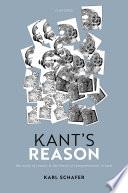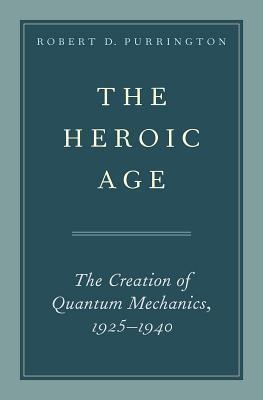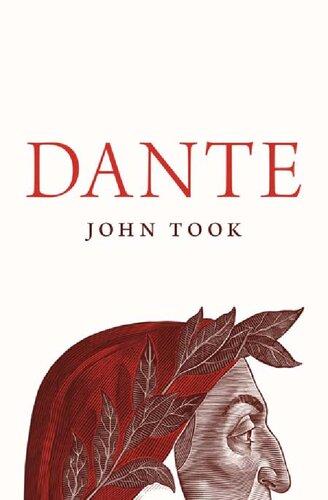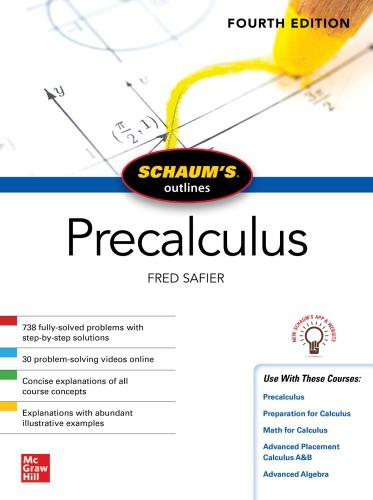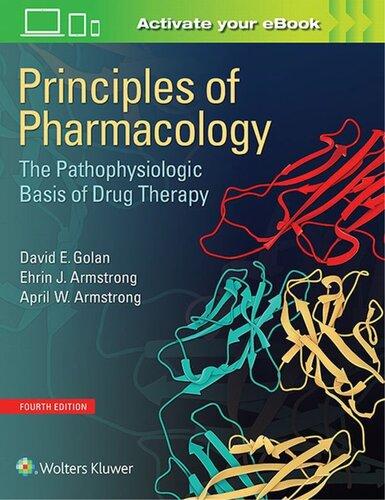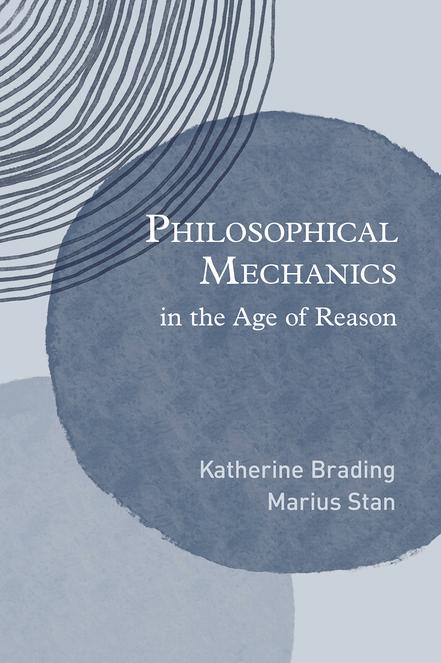Philosophical Mechanics in the Age of Reason
KATHERINE BRADING AND MARIUS STAN
Oxford University Press is a department of the University of Oxford. It furthers the University’s objective of excellence in research, scholarship, and education by publishing worldwide. Oxford is a registered trade mark of Oxford University Press in the UK and certain other countries.
Published in the United States of America by Oxford University Press 198 Madison Avenue, New York, NY 10016, United States of America.
© Oxford University Press
2023
All rights reserved. No part of this publication may be reproduced, stored in a retrieval system, or transmitted, in any form or by any means, without the prior permission in writing of Oxford University Press, or as expressly permitted by law, by license, or under terms agreed with the appropriate reproduction rights organization. Inquiries concerning reproduction outside the scope of the above should be sent to the Rights Department, Oxford University Press, at the address above.
You must not circulate this work in any other form and you must impose this same condition on any acquirer.
Library of Congress Control Number: 2023952439
ISBN 978–0–19–767895–4
DOI: 10.1093/oso/9780197678954.001.0001
Printed by Integrated Books International, United States of America
For Cherie & Lomey & Momo
For Mark & Thomas & Matthew & Toby & Max
Your love sustains us, and makes it all possible
2.
4.3
4.4
4.5
4.6
4.7
5. B ody and force in the physics of collisions: Du Châtelet and Euler
5.1 Introduction
5.2 Nature:
5.3
5.4
5.5
5.6
6.
6.1
6.2
6.3
6.4
6.5
7. Shifting
7.1
7.2
7.3
7.4
7.5
7.6
7.7
7.8
7.9
8. Early work in the rational mechanics
8.1 Introduction
8.2
8.3
8.4
8.5
8.6
8.7
9. Constructive and principle approaches in d’Almbert’s Treatise
9.1
9.2
9.3
9.4 D’Alembert’s Treatise as a contribution to rational mechanics
9.5 D’Alembert’s Treatise as a contribution to philosophical mechanics: a constructive approach
9.6 D’Alembert’s Treatise as a contribution to philosophical mechanics: a principle approach
9.7 Ontic and nomic
9.8
9.9
10. Building bodies: Euler and impressed force mechanics
10.3 Newton’s Lex Secunda, Euler’s principles, Cauchy’s laws of motion
11. External obstacles: Lagrange and the mechanics of constraints
11.2 Te Principle of Virtual Velocities and “Lagrange’s Principle”
11.4 Lagrange’s Relaxation Postulate: the kinematics and dynamics
12. Philosophical mechanics in the Late Enlightenment
12.4
12.5
Preface
Te enormous project in this book resulted from two strands of interest that converged, in a meeting of the minds, at a 2014 workshop that Michela Massimi and Angela Breitenbach organized in Cambridge, UK. Katherine Brading is a philosopher of science, and of physics in particular, who had recently begun work on foundational problems lef unsolved in the wake of Newton’s Principia. She had long been curious about the question of how and when philosophy and physics came apart—because it was clear they had not separated in the decades afer the Principia frst appeared. Marius Stan is a philosopher and historian of science whose work on mechanics has taken him deep into the 18th century. He relies on linguistic, technical, and philosophical tools to cast light on the deep structure of classical mechanics, investigating its enormous growth, and explicating its philosophical foundations. Tis book lies at the happy crossroads of their inclinations, interests, and expertise.
It has been many years in the making; during them all sorts of upheavals have taken place, from family illness to a global pandemic. Our work together has been a rock in troubled times, and speaks to the power of collaborative scholarship. But even with each other, we could not have done it alone. We owe a great debt of gratitude to many colleagues, friends, mentors, and students; it is our great pleasure to acknowledge them here.
We humbly thank those who have shaped and inspired us as scholars. KB’s interest in the entwined history of physics and philosophy developed slowly from seeds sown and nurtured by John Roche, Dan Garber, Bill Harper, and John Henry. She is forever grateful to Dana Jalobeanu and Hasok Chang for the many hours spent pondering the relationships between Descartes’ and Newton’s physics and between history, philosophy, and science, respectively. Her appreciation for the philosophical importance of the details in the physics owes most to Julian Barbour, Harvey Brown, Tom Ryckman, and the philosophy of physics group at Oxford. She thanks the students and faculty of the Notre Dame History and Philosophy of Science Graduate Program for creating an environment in which integrated history and philosophy of science is the norm.
MS learned the history of classical physics from Jed Buchwald, a gif for which he is forever grateful. For the way he looks at early modern matter theories, he is greatly indebted to Sheldon Smith. Dan Garber and Vincenzo De Risi inspired him to wonder about the relation of early modern philosophy to science. His broader grasp of classical mechanics has been shaped by Mark Wilson, Iain Stewart at MIT, and the late Cliford Truesdell. For their generous mentoring in the history and philosophy of science, MS is grateful to Moti Feingold, Gideon Manning, and Chris Hitchcock.
Tis book is not about Newton, but his legacy and impact on the Enlightenment is our backdrop. In grappling with that legacy, we have benefted enormously from long and illuminating conversations with Zvi Biener, Mary Domski, Geof Gorham, Dana Jalobeanu, Andrew Janiak, Oliver Pooley, Eric Schliesser, Ed Slowik, Chris Smeenk, and Monica Solomon. For us both, the infuence of George E. Smith as scholar, mentor, and friend is beyond measure.
MS’s path to Enlightenment mechanics went through Kant. For guidance in that difcult area, we wish to thank Eric Watkins and Michael Friedman. We thank warmly Marij van Strien, Josh Eisenthal, Sandro Caparrini, and Andreas Verdun for many enlightening discussions about the history of classical mechanics and its foundational subtleties. And we thank Alison Peterman, Jef McDonough, and David Marshall Miller, who have been our thoughtful, generous interlocutors about early modern natural philosophy for many years.
Our students, past and present, have kindly given us feedback on the various parts of this book as it grew. For their comments, we thank especially Qiu Lin, Michael Veldman, and the students in KB’s research seminars at Duke University.
For penetrating questions, comments, and advice, we thank audiences at the Oxford Philosophy of Physics Seminar, the Division of Humanities at Caltech, the philosophy departments at Princeton and Toronto, the Logic and Philosophy of Science Department at the University of California Irvine, the HOPOS 2022 Conference, and the participants at the 2018 workshop Mechanics and Matter Teory in the Enlightenment at Duke.
We thank the American Council of Learned Societies, whose generous support allowed us to take time of from teaching in 2017–18 and do a great deal of primary research and sustained refection on the problems treated here.
We are grateful to Oxford University Press; to Peter Ohlin for support and encouragement; and to his two anonymous reviewers who gave us invaluable feedback earlier in the project.
Last, and most importantly, we thank our families and our close personal friends, who have endured our dedication to this project with good humor and unfailing support. Tank you.
A golden era
1.1 Introduction
Tis is a book about philosophy, physics, and mechanics in the 18th century, and the struggle for a theory of bodies. Bodies are everywhere, or so it seems: from pebbles to planets, tigers to tables, pine trees to people; animate and inanimate, natural and artifcial, they populate the world, acting and interacting with one another. And they are the subject-matter of Newton’s laws of motion. At the beginning of the 18th century, physics was that branch of philosophy tasked with the study of body in general. With such an account in hand, the special areas of philosophy (whether natural, moral, or political) that presuppose special kinds of bodies (such as plants, animals, and human beings) could proceed assured of the viability of their objects and the unity of their shared enquiries. For all had “bodies” in common. So: What is a body? And how can we know? Tis is the Problem of Bodies, and the quest for a solution animated natural philosophy throughout the Age of Reason.
How so? Because, inherited from the 17th century as a foundational concern, the Problem of Bodies proved surprisingly resistant to solution. Consequently, it ensnared a wide range of 18th century fgures who brought to bear a diverse assortment of resources. At the forefront we fnd familiar characters from the received philosophical canon, such as Leibniz, Malebranche, Wolf, Hume, and Kant, wrestling with Body alongside others of equal or greater import, such as Maupertuis, Musschenbroek, Du Châtelet, Euler, and d’Alembert. Teir attempted solutions drew on matter theory, metaphysics, physics, and mechanics; they appealed to a variety of principles metaphysical, epistemological, and methodological; and they simultaneously disputed the appropriate criteria for success. At stake were two central issues of philosophy from the period: material substance and causation. Upshot: the contours and depths of the problem are a philosophical treasure trove.
In this chapter, we introduce the Problem of Bodies, along with the main analytical tools we use for its investigation (sections 1.2–1.6). We outline our methods (section 1.7) and our intended audiences (section 1.8). Finally, we provide a chapter-by-chapter guide for what is to come in the remainder of this book (section 1.9), and a preview of our main conclusions (section 1.10). Inevitably, some of what we say in this chapter is compressed and may seem somewhat cryptic at frst sight, but when read in conjunction with the later chapters it is, we hope, sufcient to anchor the main points of each chapter within the argument of the whole.
1.2 Te problem of bodies
Te Problem of Bodies (hereafer Body) is large and unwieldy, as we will see. Nevertheless, we argue that it has a structure that makes it amenable to analysis, in the form of a goal and four criteria for success.1
Goal: a single, well-defned concept of body that is simultaneously (i) consistent with an intelligible theory of matter, (ii) adequate for a causal-explanatory account of the behaviors of bodies, and (iii) sufcient for the purposes of mechanics.
Any satisfactory solution to Body was expected to meet this goal. To do so, it needed to satisfy the following criteria for success: Nature, Action, Evidence, and Principle (NAEP).
Nature: Determine the nature of bodies. Ascertain their essential properties, causal powers, and generic behaviors.
Action: Explain how bodies act on one another. Give an explanation of how, if at all, one body changes another’s state (where specifying the “state” of a body is addressed by Nature).
Tese frst two are metaphysical. Te next two are epistemological: they seek to uncover the justifcatory reasoning behind Nature and Action.
1 We arrived at this structure for Body by examining the arguments of the participants in the debate. We then made the elements explicit and used them to assess purported solutions.
Evidence: Elucidate the evidential reasoning behind Nature and Action. Spell out what counts as evidence for these claims, and what patterns of inference take us to them as conclusions.
Principle: Elucidate the constraining principles appealed to in attempting a solution to Body, and check that proposed solutions conform.
Such principles include the Principle of Sufcient Reason, the Law of Continuity, the restriction to contact action, and the criterion of clear and distinct ideas. Our protagonists understood their principles in diferent ways—as a priori philosophical requirements, defeasible heuristics, and so forth—but such principles were always in play, whether implicitly or explicitly.
Te four criteria (NAEP) may be variously interpreted and implemented. Teir more precise specifcation difers from one philosopher to another, and this comprises one element of the debate over Body. Excavating and investigating them is a part of what we do in this book. Te diversity of views on ofer is proof that Body was neither easy to state nor straightforward to solve.
1.3 Philosophical mechanics
“Philosophical mechanics” is a term of art.2 We use it to label the framework within which we use the resources described above (“Goal” and “NAEP”) to analyze Body in the 18th century. Such a framework is justifed by its utility: it stands or falls by the work that it does for us in this book, and that assessment can be made only when we reach the end. However, there are some remarks we can make here, at the beginning, that we hope will be helpful.
Simply put, a philosophical mechanics is any project that integrates matter theory with rational mechanics. To motivate the idea, we ofer some 17th century background in Descartes’ Principles of Philosophy and in Newton’s Principia. 3 In Descartes, we see the connection of Body to collision theory, and from there to philosophical mechanics. In Newton, we fnd an explicit
2 While the term was frst used (to our knowledge) in 1800, in Gaspard Riche de Prony’s Mécanique philosophique, ou, Analyse raisonnée des diverses parties de la science de l’équilibre et du mouvement, we adopt it for our own purposes.
3 Descartes 1991; Newton 1999.
example of a philosophical mechanics. Refected in each is an important disciplinary distinction between physics—as a sub-discipline of philosophy; and rational mechanics—as a sub-discipline of mathematics. Philosophical mechanics draws on both, as we will see.
(i) Cartesian origins
In his 1644 Principles, Descartes set out to explain all the rich variety of the natural world around us: he sought to provide a complete physics that included everything from planetary motions to the creation of comets, from the formation of mountains to the behavior of the tides, and from earthquakes to magnetism and beyond. Descartes’ physics begins with his theory of matter; the principal attribute of Cartesian matter is extension, and the parts of matter have shape, size and motion. All change comes about through matter moving in accordance with the laws of nature.
Body, as it occurs in Principles, concerns the parts of matter, for these are Descartes’ bodies. His laws of nature take parts of matter—or bodies—as their subject-matter. Te frst issue is whether (and if so, how) he succeeds in giving a viable account of bodies prior to his introduction of the laws of nature. For, he suggests that matter is divided into parts by means of motion, but he also defnes motion by appeal to the parts of matter, generating an undesirable circle. Tis issue was widely appreciated at the time, and has been much discussed since.4 If we set it aside, and presume that Descartes has “parts of matter” available, a second issue then comes to the fore. While the laws of nature supposedly take these bodies as their subject-matter, Descartes’ bodies seem not to have the properties and qualities demanded by the laws. Te only properties that his matter theory secures for bodies are shape, size, and motion. However, as we move through the exposition of his laws, we fnd Descartes appealing to “stronger” and “weaker” bodies; “hardness”; “yielding” and “unyielding” bodies; the “tendency” of bodies to move in a straight line; and the “force” of a body, which is nothing other than the
4 See Garber 1992, 181; Brading 2012; and references therein. One upshot is a tendency among Cartesian philosophers toward mind-dependent bodies, as seen in both Desgabets and Régis, for example. Lennon (1993, 25) writes of Régis: “Individual things result from our projection of sensations on otherwise homogeneous and undiferentiated extension. On this view individual things are what Malebranche and Arnauld took to be the representations of things.”
“power” of a body to remain in the same state. But it is far from clear that these are reducible to shape, size, and motion.5
Te issue is pressing because of the role of bodies in Descartes’ physics. It is by means of bodies moving in accordance with the laws of nature that he aims to explain all of the material world. If his philosophy lacks the resources for his matter theory to yield bodies, his physics cannot get of the ground.
A necessary condition on a viable solution to Body, within Descartes’ system, is that the resulting bodies are capable of undergoing collision. Tis is because all change takes place through impact among the parts of matter. Collisions therefore lie at the heart of his physics, and Descartes supplements his laws of nature with seven rules of collision. Te rules, like the laws, appeal to his prior theory of matter: to the essential attribute of matter (extension), and its modes (shape, size, and motion). To sum up: collision theory is foundational for Descartes’ physics, and it combines two elements: matter theory and rules of impact.
Te centrality of collisions is not confned to Descartes’ philosophy. For anyone pursuing “mechanical philosophy” in the 17th century, impact was the only kind of causal process by which change comes about in the material world. Moreover, even for philosophers who, in the wake of Newton, sought to move beyond “mechanical philosophy” by endowing bodies with additional “forces,” collisions remained an important means of action and interaction among bodies. As a result, collision theory was foundational for natural philosophy in the late 17th century. Moreover, following Descartes, any adequate collision theory was required to combine a theory of matter with rules of collision: we call this a philosophical mechanics of collisions.
(ii) Te integration of philosophical physics with rational mechanics
Projects in philosophical mechanics seek to meet the demands of both physics and rational mechanics. What do we mean by this?
5 Impenetrability, solidity, and hardness are among the properties of body that some philosophers thought Descartes was not entitled to (as in Locke’s discussion of body, for example). Te question of whether a notion of force must be added (cf. Leibniz) persists long into the 18th century, as we shall see in later chapters of this book.
Early modern physics retained the Aristotelian aim of seeking the most general principles and causes of natural things, and of their changes. Te primary subject-matter of physics was bodies: the role of physics was to provide a causal account of the nature, properties, and behaviors of bodies in general. Frequently, the term “physics” was used interchangeably with “natural philosophy.” Tis refects the fact that early modern physics was a sub-discipline of philosophy, practiced by self-professed philosophers who retained responsibility for and authority over the account of body in general. When other areas of philosophy (such as those treating specifc kinds of bodies) and other disciplines (such as mechanics) presupposed bodies, they did so with the presumption that physics succeeds in providing an account of bodies in general.
Te term “mechanics,” on the other hand, had several senses, ranging from the science of machines to the various strands of “mechanical philosophy,” but here we use it with one particular connotation, current at the time and broadly familiar from present-day usage. Specifcally, we are interested in rational mechanics, namely, the mathematical study of patterns of local motion and mutual rest. It was a descriptive approach that represented mechanical attributes (mass, speed, force, and the like) as measurable quantities. Its inferences were subject to laws of motion and equilibrium conditions, functioning as constraints on admissible conclusions. Put modernly, rational mechanics pursued deductive schemas for moving from values of relevant parameters to integrals of motion or to diferential equations relating these parameters. At frst, its representational framework was heavily geometric, but through the 1700s algebraic methods increasingly supplanted the earlier reliance on synthetic geometry. Our use of the term “rational mechanics” is one that came to dominate by the end of the 18th century, and it can be found explicitly one hundred years earlier, in the Preface to Newton’s Principia.
By “mechanics” we mean, from here on (unless stated otherwise), rational mechanics. In his Preface, Newton ofered a taxonomy of mechanics in which he divided “universal mechanics” into three: practical mechanics, rational mechanics, and geometry. For our purposes, the key points are as follows. Like geometry, rational mechanics is mathematical and exact: it sufers from none of the imperfections of practical mechanics. Unlike geometry, however, rational mechanics goes beyond the treatment of magnitudes to include motions and forces. Rational mechanics, Newton says, is the “science, expressed in exact propositions and demonstrations, of the motions
that result from any forces whatever and of the forces that are required for any motions whatever.”6
Te term “mechanics” today typically denotes some branch of physics (e.g., classical mechanics, quantum mechanics, statistical mechanics, and so forth). At the beginning of the 18th century, this was not the case: physics and mechanics were distinct felds.7 Unlike mechanics, physics was largely qualitative and, as we have said, practiced by philosophers. Mechanics, on the other hand, fell under the authority of mathematicians. While some people at the time, including some of the most infuential fgures of the period, were both philosophers and mathematicians, the two disciplines were distinct. Tey had distinct methods, distinct goals, and distinct domains of authority.
With this in mind, we see that physics in the early 18th century is importantly diferent from physics today, in its goal (of providing a causal account of the nature, properties, and behaviors of bodies in general), methods (which were qualitative), and disciplinary relations (within philosophy, and distinct from mechanics). Physics thus understood is central to the arguments of our book, and it is this 18th century conception that the term “physics” denotes. Sometimes, we will use the term “philosophical physics” as a reminder that in the 1700s physics was a non-mathematical branch of philosophy.
Descartes’ account of bodies falls within his philosophical physics. His rules of collision, insofar as they are mathematical and exact, fall under the remit of rational mechanics. According to the analysis that we ofer, Descartes’ theory of collisions integrates resources from physics and rational mechanics in order to provide a philosophical mechanics of impact. By itself, this makes overly hard work of Descartes on collisions, with a superfuity of terminology for little philosophical gain. Te payof comes from the application of the same analytical tools over the next 150 years of developments.
(iii) Newton’s Principia as a project in philosophical mechanics
Newton’s Principia contains a rational mechanics, but it is not merely a text in rational mechanics. His choice of title, Mathematical Principles of Natural Philosophy, is revealing. Newton declares that the forces to be treated
6 Newton 1999, 382.
7 Guicciardini 2009.
mathematically include natural forces, such as gravity. In this way, rational mechanics becomes a tool for the pursuit of natural philosophy. In Book III, Newton applies the results of his rational mechanics from Books I and II to the particular case of gravity, and thereby provides a causal account of the motions of material bodies under the force of gravity: he ofers a contribution to philosophical physics.
Te Principia therefore contains both rational mechanics and physics. Newton explicitly set out the relationship between the two, as he understood it. Together, the overall project forms a framework for pursuing the science of bodies in motion, in which a rational mechanics (an exact mathematical treatment of bodies and the forces that act upon them) is to be integrated with a physics (a treatment of the causes of the motions of bodies). Newton’s physics is incomplete, but his intention to contribute to both rational mechanics and physics is clear. Indeed, Newton’s “Axioms, or Laws of Motion” belong to both. Te 17th century, prior to Newton, had seen discussions over whether the laws of nature (such as those found in Descartes’ Principles) might also serve as axioms of mechanics. Up until Newton, books of physics and books of mechanics were distinct, and the principles of each difered. Te Principia, in attempting to combine rational mechanics with physics, is an important example of a philosophical mechanics.8
1.4 C onstructive and principle approaches
We have seen the centrality of collisions within Descartes’ natural philosophy. Yet, as is well known, his rules of collision were rejected for their inadequacy with respect to observation.9 Te ensuing 17th century discussions are an important background for our book. First, they reveal hints of two distinct heuristics for tackling Body constructive and principle—and we discuss these here. Second, they preview the problems with collision theory that 18th century natural philosophy was to inherit.
In October 1668, Henry Oldenburg, the secretary of the Royal Society, wrote to Huygens and Wren asking for their theories of motion and collision.
8 For a detailed discussion of Newton’s philosophical mechanics see Brading, forthcoming.
9 Descartes himself maintained that his rules applied only to microscopic (and therefore unobservable) collisions, not to the bodies of our experience. Te rejection of this defense of his rules speaks to the question of epistemology: of the means by which we are to determine whether or not the proposed rules are to be accepted.
Soon, Huygens, Wren, and Wallis submitted their proposals. Tose of Huygens and Wren cover the case of perfectly elastic bodies while Wallis’ pertain to perfectly inelastic collisions.10 One might think that this is where the story should end: we have the correct rules of collision, so what else is there?
As Jalobeanu describes, the issues were far from resolved by the arrival of the rules from Huygens, Wren, and Wallis.11 On December 1, 1668, Oldenburg wrote to Wallis (and others) asking about the physical causes of rebound; whether resting matter resists motion; whether motion is conserved; whether motion is transferred from one body to another when they collide; and so forth. Te questions concerned the material nature of bodies and the physical causes of their behaviors during impact.
In their submissions, Huygens, Wren, and Wallis had not discussed the material constitution of bodies, let alone used such considerations as pertinent to the problem. Wallis responded by claiming that the rules themselves provide an account of the physical causes:
I have this to adde . . . you tell mee yt ye Society in their present disquisitions have rather an Eye to the Physical causes of Motion, & the Principles thereof, than ye Mathematical Rules of it. It is this, Tat ye Hypothesis I sent, is indeed of ye Physical Laws of Motion, but Mathematically demonstrated.
(Oldenburg 1968, 220–2)
Huygens explicitly set aside causes:12
Whatever may be the cause of hard bodies rebounding from mutual contact when they collide with one another, let us suppose that when two bodies, equal to each other and having equal speed, directly collide with one another, each rebounds with the same speed which it had before the collision.
(Huygens 1977, 574)
10 For simplicity of exposition, we use today’s terminology here. Te problem of how to categorize bodies—as hard, sof, elastic, inelastic, rigid, malleable, unbreakable, infnitely divisible, etc.— and how to correlate these terms with the various behaviors of bodies (when pressed upon, during impacts, etc.) persisted into the 18th century, as we shall see. For discussion of the 17th century struggles with “hardness” in the context of collisions, and in relation to the Royal Society debates, see Scott (1970, 12f.).
11 See Jalobeanu 2011.
12 Tis excerpt is from a paper published posthumously in 1703. See also Murray, Harper, & Wilson (2011, 189, footnote 8) who note that this phrase does not appear in the original letter sent to Oldenburg but was added prior to publication.
But, their quietism about material properties and causes met with resistance at the Royal Society. Another member, William Neile, argued that the collision rules should be supplemented by an underlying matter theory so as to account for the “physical causes” of the observed phenomena, such as rebound.13
Te problem to be solved arises in the following way. If the properties of bodies (such as hardness and “springyness”) and the principles concerning the behavior of bodies (such as conservation of quantity of motion) appealed to in the rules of collision arise from the nature of matter (as they do in Cartesian physics), then a problem in mechanics—fnding the correct rules of collision—is inevitably entangled with matter theory. More generally, Neile’s objection signals a theme that persists late into the 18th century: the search for a causal-explanatory account of the properties of bodies, and of the collision process, that integrates the rules of impact into a theory of matter: a philosophical mechanics of collisions.
Te Royal Society dispute can be analyzed as ofering two general approaches for tackling problems within philosophical mechanics. Following Neile, we may decide to begin with a theory of matter, and develop our collision theory from there. We call this the constructive approach. Following Wallis, we may decide to begin with the rules, and seek to build our matter theory from them. We call this the principle approach. By “approach” we here mean a general strategy consisting of a broad heuristic along with a reservoir of initial evidence and explanatory premises. We will argue that 18th century attempts to solve Body are best understood as pursuing a philosophical mechanics of bodies by means of these two general approaches. We further specify them as follows.
Constructive approach (bodies): Te qualities and properties of matter are the primary resource for solving Body.
From the properties and powers of matter, we construct concepts of body (Nature) and bodily action (Action) consistent with Principle and Evidence (see section 1.2) to arrive at a philosophical mechanics in which the resulting account of bodies yields, or is at least consistent with, the notion of body that rational mechanics presupposes.
13 For context and discussion, see Jalobeanu 2011 and Stan 2009.
Tis approach comes in two varieties, a stronger and a weaker. Te stronger begins from an explicit theory of matter, and from there constructs bodies. Te weaker eschews a foundation in matter theory, working directly with bodies instead; it presumes that the methods and resources of philosophical physics itself are sufcient for determining their qualities and properties.
Principle approach (bodies): Teoretical principles, such as the laws of motion, are the primary resource for solving Body
In the case of laws of motion, the principle approach means drawing the concept of body, and of bodily action, from the laws themselves, without appeal to any prior theory of the material constitution of bodies. From there, we arrive at a philosophical mechanics by showing that the resulting account coheres with a philosophically viable theory of matter in meeting the demands of NAEP. By “coheres with,” we likewise include two diferent possibilities, a stronger and a weaker once again. Te weaker is that the laws are deemed necessary in constructing a body concept, but that extra-legal ingredients are also needed, drawn perhaps from an independent matter theory. Te second, stronger, position is that the laws are both necessary and sufcient for the construction of an adequate body concept.
Insofar as matter theory and physics fall under the authority of philosophy, and laws of motion under rational mechanics, the constructive and principle approaches align with two distinct routes to a philosophical mechanics: one which prioritizes philosophy—including matter theory and physics—and the other which prioritizes rational mechanics. To see this play out requires the rest of our book.
Te constructive and principle approaches generalize beyond bodies. At the beginning of the 18th century, bodies were presumed to be the objects of study in both physics and rational mechanics. As the century wore on, this presumption came under increasing pressure. From the perspective of mechanics, candidates for the objects of study in the 1700s included point particles, fexible and elastic solids, inviscid fuids, and mass volumes in equilibrium confgurations.14 If we relax the assumption that the objects of physical theorizing are bodies, then it becomes an open question what those objects might be, and Body becomes a more general problem, the Problem of
14 If we move beyond the 18th century we soon add classical felds, quantum particles, quantum felds, and so forth, as objects of theorizing. Te problem persists of how best to specify these objects.



